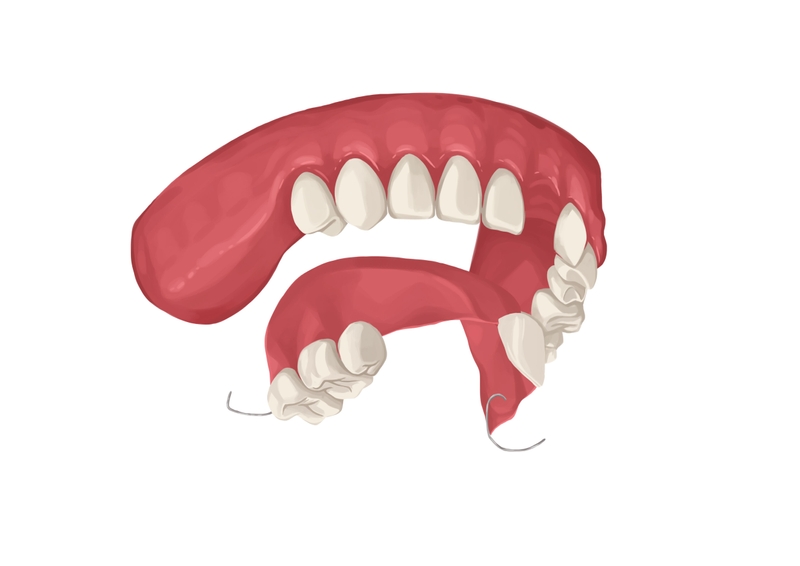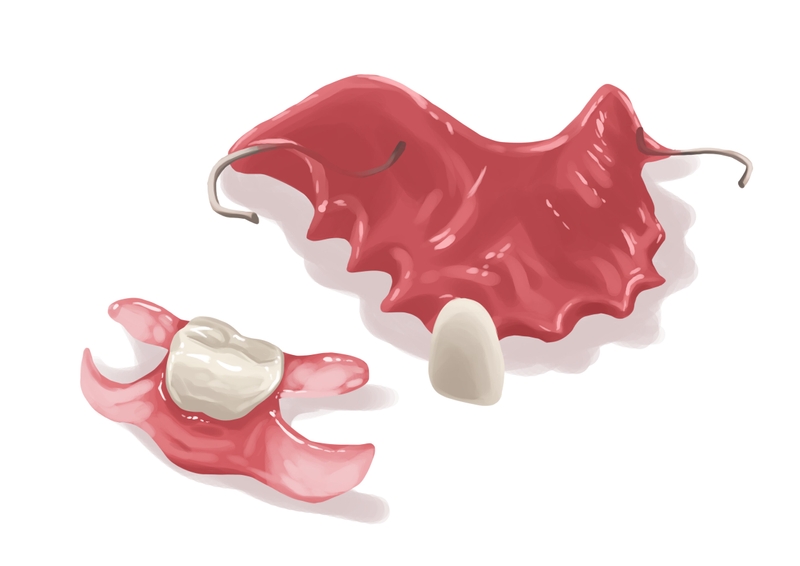- A dental flipper is a removable retainer or partial denture with usually one tooth attached. It is a temporary form of tooth replacement.
- A flipper tooth improves aesthetics and maintains space between teeth until a permanent restoration is placed.
- Flipper dentures may have visible grips or hooks, which can bring you discomfort. Flipper dentures can be difficult to keep hygienic.
Use Authority Dental to find an affordable denture dentist near you, or get a dental plan and save up to 60% on all dental procedures, including dentures.
Should you get a flipper tooth? Here's everything you need to know.
Dental flipper candidate

Picture by Authority Dental under CC 2.0 license
Dental flippers are usually recommended for children and for people awaiting dental implants.
Underage patients should not get dental implant treatment. This is why children who have suffered tooth damage or who are genetically toothless may benefit from flippers. Most often, they receive implants when they turn 18, or even later.
Flipper teeth are great during healing periods for adults as well. Implants can usually be inserted several months after extraction or bone augmentation procedures. In the meantime, flippers maintain a natural look.

The main goals of a removable dental flipper are to improve aesthetics, maintain spacing before a permanent restoration, and make talking easier.
Flipper tooth cost
Flipper tooth costs near you range from $450 $1,000, with an average of $750.
The fee depends mainly on two things:
The number of teeth you need to replace, and
The materials used.
The more teeth a flipper denture has, the more expensive it might be. Acrylic is a lot cheaper than porcelain or metal. The point is to make the temporary restoration as affordable as possible.
Pros and cons of a flipper tooth

Picture by Authority Dental under CC 2.0 license
Flipper dentures are more affordable than other tooth-restoration options. Some patients choose to wear them for a long time, either while they save up for another restoration or indefinitely.
Either way, flipper tooth reviews are mainly positive. They offer a lot of comfort and are easy to put on and take off.

Impressions for flippers can be made before a tooth is extracted. This means there is no need to go without teeth. They are also quick to make. Flippers also prevent the remaining dentition from shifting.
On the other hand, the grips and hooks that hold the flipper in place are sometimes visible. Many patients also describe flippers as uncomfortable and hard to get used to. They limit what you can eat, as the flipper teeth should not be used to bite into anything complicated. Food also collects underneath, so they must be cleaned after eating. Flipper dentures are particularly vulnerable to drops and other trauma, too.
What is more, the grip on flipper dentures loosens easily. This is because they change shape over time, since flippers do not stimulate bone growth. Your mouth and face also change, which leads to a difference in fit, loosening, and an older appearance. For these reasons, even the flipper teeth produced by the best dental lab are not a good long-term solution.
Lee explains: "Here is the crucial analogy I always use: a flipper is the 'spare tire' of dentistry. It looks like a tooth and gets you back on the road socially, but it is not designed for the long haul or heavy-duty performance."
"You would not drive cross-country on a spare tire, and you definitely should not try to bite into an apple with a flipper tooth. It is a purely cosmetic placeholder," he emphasizes.
Affordable compared to other restoration options
Easy to put in and take out
Can be prepared before teeth are extracted
Quick to make
Provide stability for other teeth
Grips or hooks may be visible
Can be uncomfortable and hard to get used to
Break easily
May make hygiene more difficult
Fit may change over time
Don’t stimulate bone
Limitations on diet while wearing

FAQ
What is the difference between a flipper and a partial?
Flipper teeth are basically partial dentures made from less durable materials. This is because they are a temporary solution. Partial dentures, on the other hand, are usually made with sturdiness in mind. They are meant to last the patient for at least a few years.
Partials may be made from flexible materials such as nylon or Valplast. Alternatively, they might consist of a metal framework. Those can withstand a lot more wear and tear and don’t break as easily from falls.
How long can you wear a dental flipper?
Dental flippers are designed to be worn for a couple of weeks or months while awaiting another restoration. In terms of how long you can wear it each day, this is about 8 hours. Your dentist may recommend wearing it for 24 hours when you first get it, to allow your mouth to get used to it.
Flipper teeth should be taken out each night, cleaned, and stored in water. Sleeping with your dentures consistently may lead to dry mouth, gum disease, or candida infection. It can also cause damage to your denture.
Harry Lee, DMD
When a patient loses a front tooth, especially unexpectedly, their first concern is almost always cosmetic. A dental flipper is our go-to solution for this exact situation. It is a fast, affordable way to fill that gap so you can smile and speak confidently while we plan for a more permanent fix.